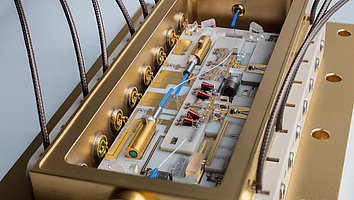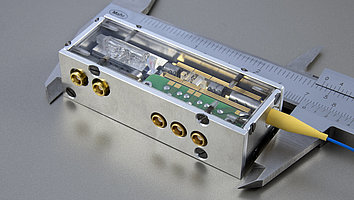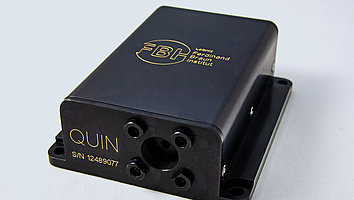Press release images
-
Robust micro-integrated laser module
Extended Cavity Diode Laser (ECDL) laser module used, e.g. for precision iodine spectroscopy in space.
©FBH/B. Schurian -
Module for optical frequency reference
Spectroscopy module with gas cell for an autonomous frequency reference (OFR) based on the D2 transition in rubidium at 780 nm.
©FBH/P. Immerz -
Compact sensor head for 3D quantum imaging
The sensor system can provide precise 3D depth information using "undetected" photons in the mid infrared range and can be used for quantum OCT of ceramic and polymer materials.
©FBH/A. Pubantz


